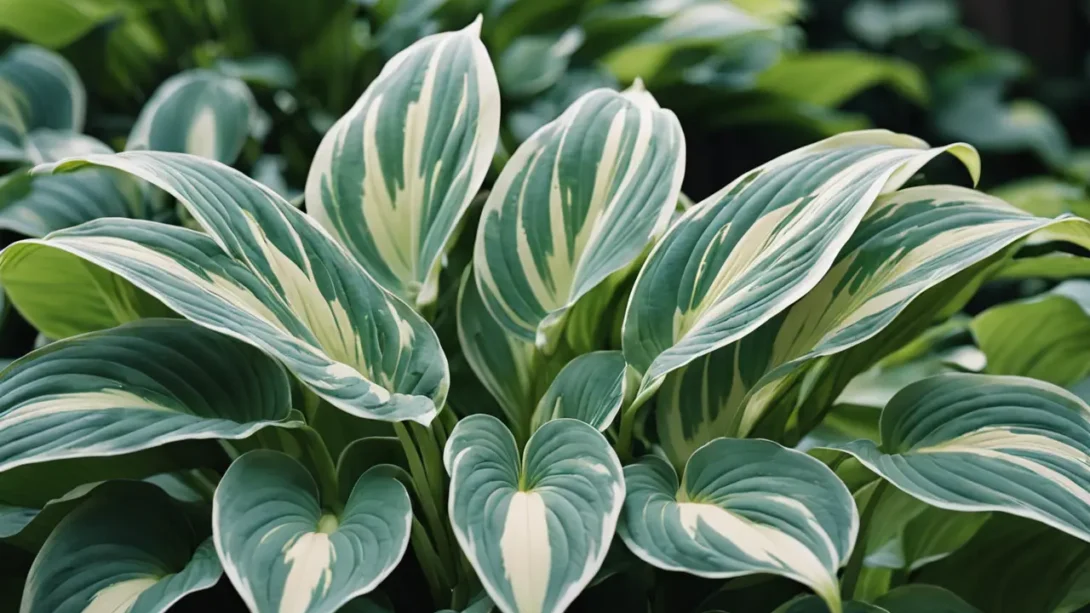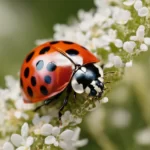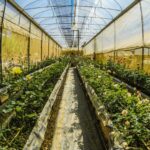Hostas, with their lush foliage and shade-tolerance, are a staple in many gardens. Their appeal lies not just in their aesthetic value but also in their versatility and low maintenance. However, this popularity comes with a downside—hostas often attract various animals that find their leaves irresistible. This article delves into the common culprits behind hosta damage and offers insights into protecting these beloved plants from unwelcome diners.
Hostas
Hostas are perennials known for their attractive foliage, which comes in various shapes, sizes, and colors. They thrive in shady spots, making them ideal for areas where other plants might struggle. Beyond their beauty, hostas are prized for their hardiness and the minimal care they require once established. However, their tender, broad leaves are also highly appealing to a range of animals, leading to frequent garden invasions. Recognizing the threat posed by these animals is the first step in safeguarding your hostas.
Identifying Hosta Predators
A variety of animals consider hostas part of their diet, each leaving distinct signs of their feasting. Understanding which animals are most likely to target hostas in your garden depends on observing these signs and knowing a bit about the behavior of potential predators.
Deer
Deer are perhaps the most notorious consumers of hostas. They can decimate a hosta plant overnight, leaving behind a telltale sign of their visit—large, jagged sections missing from the leaves or entire plants. The height at which the damage occurs can also indicate deer activity, as they tend to eat the leaves from the top down. To deter deer, gardeners might consider using physical barriers like tall fences or applying deer repellents around their hostas. Some also recommend planting deer-resistant species around hostas to make the area less appealing.
Rabbits
Rabbit damage is usually lower to the ground, with clean cuts on the leaves and stems. Rabbits tend to nibble on young shoots and leaves, often leaving behind a neatly clipped appearance. Encircling hostas with chicken wire or using rabbit repellents can help protect these plants. Additionally, maintaining a clean garden free from dense cover can discourage rabbits from settling in.
Slugs and Snails
Though not animals in the traditional sense, slugs and snails are common pests that leave distinctive damage on hostas. They create irregular holes in the leaves, often starting at the edges, and leave behind a slimy residue. Managing moisture levels in the garden, using slug and snail baits, and encouraging natural predators like birds and toads can reduce their populations and protect hostas.
Voles
Voles, often confused with moles, are small rodents that can cause significant damage to hostas, not by eating the leaves but by targeting the roots and crowns of the plants. This underground assault can lead to the sudden wilting and collapse of hostas, as the voles sever the vital connections between the roots and the leaves. Identifying vole activity involves looking for their tunnel entrances, which are small holes in the soil around affected plants. To combat voles, gardeners can use underground barriers like wire mesh around the roots of hostas or employ vole repellents. Encouraging natural predators, such as cats or owls, can also help keep vole populations in check.
Squirrels and Chipmunks
While squirrels and chipmunks are more often accused of digging in gardens rather than eating plants, they can occasionally target hostas, especially young shoots and leaves. Their damage is sporadic and not as severe as that caused by deer or rabbits, but it can still be frustrating for gardeners. To deter these critters, using physical barriers like netting or cages around young plants can be effective. Some gardeners find success with motion-activated sprinklers or ultrasonic repellents to scare them away from the garden.
Protecting Your Hostas
With the array of animals that find hostas appealing, gardeners must adopt a multifaceted approach to protect these plants. Integrated Pest Management (IPM) strategies offer a sustainable and effective way to minimize damage while promoting a healthy garden ecosystem. IPM involves a combination of cultural, physical, and, if necessary, chemical methods to manage pests:
- Physical Barriers: Fences, cages, and netting can provide immediate protection against larger animals like deer and rabbits. For subterranean pests like voles, installing wire mesh barriers in the soil around hostas can prevent access to the roots.
- Cultural Practices: Maintaining a clean garden by removing debris and fallen leaves can reduce hiding spots for pests like slugs, snails, and voles. Properly spacing plants to improve air circulation can also help minimize the moist conditions that attract slugs and snails.
- Natural Repellents: Various repellents, from homemade concoctions using garlic or hot peppers to commercially available products, can deter animals without harming them or the environment. Consistently rotating repellents can prevent animals from becoming accustomed to them.
Alternative Solutions and Preventative Measures
In addition to the strategies outlined, gardeners have at their disposal a variety of alternative solutions and preventative measures that can further safeguard hostas from animal predation. These methods emphasize proactive planning and garden design to create an environment less inviting to potential pests.
- Planting Less Appealing Plants: One effective strategy is to surround your hostas with plants that are less attractive to common pests. Herbs with strong scents, such as lavender and rosemary, or plants known for their deer-resistant properties can act as natural deterrents.
- Garden Layout and Design: Thoughtful garden design can play a significant role in protecting hostas. Placing hostas closer to the house or in areas that receive regular human activity can deter wildlife. Similarly, elevating hostas in raised beds or containers may make them less accessible to some animals.
- Encouraging Natural Predators: Fostering a garden environment that attracts natural predators of common pests can help control their populations. Birds, toads, and beneficial insects can reduce the number of slugs, snails, and insects that might otherwise target hostas.
- Regular Monitoring: Keeping a close eye on your hostas and the surrounding garden can help you spot signs of animal activity early. Early detection allows for quicker intervention, whether it’s reinforcing physical barriers or applying repellents.
Conclusion
The question of what animals eat hostas has a varied answer, encompassing a range of wildlife from deer and rabbits to slugs and voles. Understanding these animals and their behaviors is crucial in developing effective strategies to protect these beloved garden plants. By combining physical barriers, cultural practices, natural repellents, and thoughtful garden design, gardeners can significantly reduce the likelihood of animal damage to their hostas.
Implementing a holistic approach to pest management not only helps in protecting hostas but also promotes a balanced and healthy garden ecosystem. While it may be challenging to completely eliminate the risk of animal predation, the measures outlined in this article can help gardeners enjoy lush, vibrant hostas throughout the growing season. Remember, the goal is not to wage war on wildlife but to coexist with the natural world in a way that respects the needs and habits of all garden inhabitants.



